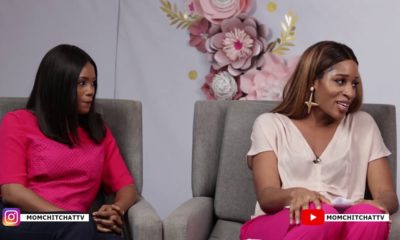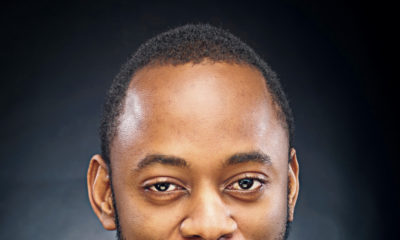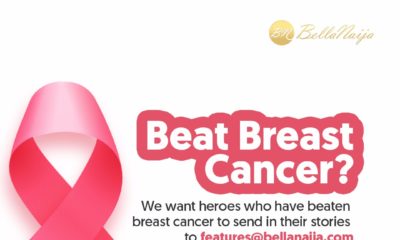Features
BN Doctors’ Lounge: Pink October – Breast Pain
 We concluded last week that the female breasts are made up of functional breast tissue as well as supporting tissue, and a rich network of blood vessels and an abundant nerve supply. {If you missed it, click here}
We concluded last week that the female breasts are made up of functional breast tissue as well as supporting tissue, and a rich network of blood vessels and an abundant nerve supply. {If you missed it, click here}
A problem in any one of these or the underlying structures may cause pain in the breasts and this week we will take a look at these in detail.
Next week, we will look at all the types of breast lumps and determine which ones are cancerous and which ones are not as well as what to expect during a lumpectomy.
I support a charity called BRECAN which stands for Breast Cancer Association of Nigeria, and this year for our Pink October breast Cancer Awareness program, the wonderful people at SHOPRITE have given us a ₦20,000 gift voucher to give away. All you need to do to win is take a creative picture or video of you wearing something pink, add a message and share it with us on Facebook, Twitter, or Instagram, by using the hashtags #PinkNigeria #BrecanCares. I’ll be looking out for your pictures, so get snappy.
So… Doctor, my breasts hurt. Do I have cancer?
Usually when I have a patient with breast pain the first thing they are worried about is cancer. Thankfully, pain is almost never a symptom of breast cancer before diagnosis. What this means is that if you are feeling pain in your breasts and no other symptoms, or previous diagnosis, then it’s most likely NOT cancer.
Ok, so it’s not cancer. Then what is it?
The easiest way to determine the cause of breast pain is to identify its pattern of occurrence if any. Is the pain associated with your menstrual cycle and does it occur just before or around your period? Yes? Then it’s Cyclical Breast Pain or Cyclical Mastalgia.
Does the pain have no bearing to your menstrual cycle and continue even after your period has finished? Yes? Then it’s Non Cyclical Breast Pain.
Simple right? If you are still not sure, try keeping a diary and record the day when the pain begins, its severity and also when it ends and then compare it with your monthly cycle.
Cyclical Mastalgia
Most women experience an increase in breast size and some tenderness or discomfort in the breasts just before and around the time of their monthly cycle, and as we said last week, this is completely normal. However, for some women, it can go way beyond mild discomfort or tenderness. Some patients have reported that the pain can be so severe that they can’t bear to even have the fabric of their clothes touching the breasts. This is Cyclical Mastalgia.
In women with cyclical mastalgia, the breast tissue is more responsive to the circulating hormones present during the monthly menstrual period and as a result, the breasts are significantly more engorged and more painful than in other women.
The pain of cyclical mastalgia will usually affect both breasts at the same time and is most commonly reported in the outer upper corner of the breast adjacent the arm pit. It could also occur in the middle of the breast, around the nipples or anywhere in the breast for that matter. Patients frequently report that the pain subsides just after the period starts but can continue for longer in others.
You may also experience fuller breasts accompanied by increased lumpiness. There is no one lump per sé, just a change in consistency.
Can It Be Treated?
Most cases of cyclical mastalgia will resolve without treatment. Some patients find that wearing a full support bra (padded or unpadded , preferably with no underwire) can help reduce pain by holding the breasts securely in place and reducing unwanted motion as well as avoiding any activity that may involve contact with the breasts. For patients in severe pain, your doctor may choose to prescribe a topical non steroidal anti inflammatory cream (to be applied to the skin) or some other form of pain relief.
What about Non cyclical Breast pain?
This usually arises from the non functional tissues in the breast or from deeper structures under the breast. Non cyclical breast pain is unrelated to your period and does not reduce in intensity when the period starts. The most significant cause of non cyclical breast pain is a condition known as Breast abscess which is an infection of the breast glands causing a pus filled ‘boil’ to form within the substance of the breast. It is often described as warm, throbbing and intensely painful. Older women above forty are more susceptible (though it can also occur in younger women) and usually it will affect only one breast at a time.
Some women on certain doctor prescribed medications may develop non cyclical breast pain. Women with larger breasts may have associated back and or chest pain which can radiate to the shoulders and upper arms.
Pulling a muscle in the chest, direct trauma or other chest conditions may produce pain that radiates to the breast.
Can It Be Treated?
To treat a breast abscess your doctor will drain the pus and prescribe an antibiotic to help clear the infection.
Other causes of non cyclical breast pain can be treated according to their specific cause.
If you are experiencing pain in your breasts, please see a physician.
In a Nutshell
There are two types of breast pain, Cyclical and non Cyclical. The most important thing to remember is that if you are feeling pain in your breasts and no other symptoms, or previous diagnosis, then it’s most likely NOT cancer.
Did You Know?
You could compare the pain of non cyclical breast pain to the pain an adolescent girl feels when her breasts start to grow, while the pain of cyclical mastalgia is mimicked closely by the breast fullness that a nursing mother feels when her breasts are engorged with milk.
____________________________________________________________________________________________
David Olamide Craig is a Physician, Pastor, Photographer, Poet and Playwright. He graduated Bachelor of Medicine and Bachelor of Surgery from the University of Ibadan and holds a Masters in Occupational Health from the Institute of Occupational and Environmental Medicine, University of Birmingham. He is passionate about healthy living and sustainable energy. When he is not seeing patients, Dr. Craig spends his time stretched out on his favourite couch, reading books, magazines, and blogs. Catch him on www.ijgb.com.ng and follow him on Twitter @RevDrCraig




















